Retailers today face a big challenge, as the shopping habits of consumers span multiple channels, from physical stores to Google to YouTube.
As a result, omnichannel is now a baseline expectation.
Traditional retail strategies often fall short, failing to provide a cohesive and personalized shopping experience across all channels. This lack of consistency can lead to customer frustration and missed sales.
Enter omnichannel retail—a model that seamlessly blends various shopping channels into one unified customer experience.
Ahead, you’ll learn the basics of omnichannel retailing and how to create your own omnichannel experience for customers.
What is omnichannel retail?
Omnichannel retailing is a fully integrated approach to commerce, providing shoppers a unified experience across all channels or touchpoints. Omnichannel retailing allows merchants to reach customers where they want to buy products.
True omnichannel shopping goes beyond brick-and-mortar locations to mobile devices, online marketplaces, social media, and wherever your users browse online through retargeting ads.
Some 70% of customers spend more on brands with a smart omnichannel strategy. It may be that it’s easier to measure single variables like efforts focused exclusively on mobile, marketing, or merchandising strategies. But integrating all of these touchpoints into a holistic omnichannel approach is the only way to fully realize the potential of each touchpoint.
Conceptually, omnichannel is rather simple—the whole is greater than the sum of its parts. Omnichannel involves integrating each touchpoint to offer the customer exactly what they need, the moment they need it, anywhere they are, and on any device. What’s complex is executing in both the digital and physical worlds simultaneously.
Overcoming these obstacles starts with envisioning your omnichannel marketing campaigns.
Learn more: Omnichannel vs. multichannel
Benefits of omnichannel retail
Connect with customers on any channels
The customer journey is not linear. It’s an intricate web of touchpoints that span across online and offline channels. In a recent Salsify report, respondents from the US, UK, Germany, and France reported they engage on at least 11 different touchpoints.
Convenience is a driving factor in this shopping experience. Some 87% of millennials say convenience is important when shopping. They value the ability to engage with brands and buy products whenever and wherever they want.
Omnichannel retail helps you build a strong, coordinated presence across all those touchpoints.
Create more personalized experiences
Customers want deeper personalization from brands. Some 62% of consumers think companies could do a better job tailoring their experiences. They want companies to understand their needs and preferences and tailor the shopping experience accordingly.
Omnichannel retail helps you personalize the experience across all touchpoints using data. This includes purchase history, browsing behavior, demographic information, and more to accommodate each customer’s preferences.
Build customer loyalty
Part of an omnichannel strategy is being flexible. New channels emerge and steal attention from incumbent channels. It’s why brands with robust omnichannel strategies often rely on a headless commerce architecture, which allows brands to flexibly offer commerce anywhere customers are.
Besides positioning brands to use new channels to acquire customers, omnichannel also better positions brands to deepen relationships with existing customers. Remember, omnichannel customers spend more, especially when the effort is used as part of an intentional customer retention strategy.
Omnichannel is a customer retention lynchpin; inspiring customers to make repeat purchases quicker, increasing customer loyalty, and lifting the lifetime value of your customers.
Sell more
When you expand across multiple channels, you can reach more customers and increase sales. Customers can switch between platforms and channels and have the same shopping experience, which encourages them to buy.
Animals Matter spent years selling its products to retailers entirely through catalogs. It wasn’t until switching to Shopify that it was able to create a fully integrated experience across channels like Facebook, Google Ads, Pinterest, and, most importantly, its ecommerce store. After moving to omnichannel retail, the brand saw a 45% increase in YOY sales.
How omnichannel retail works
Omnichannel is consistent, yet unique. It’s about allowing consumers to purchase wherever they are while communicating in a way that is in tune with why they use a given channel and showing awareness of their stage in the customer lifecycle.
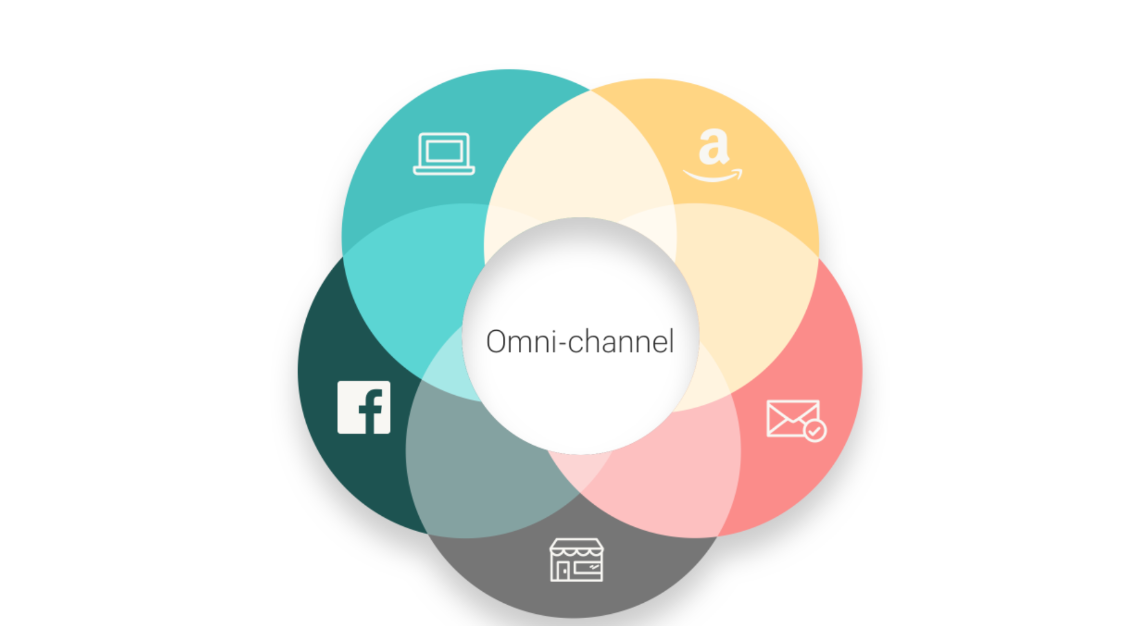
Here’s how an omnichannel customer experience might look:
-
A customer discovers and buys from you on Amazon.
-
They receive a tailored-for-Amazon unboxing experience, with inserts that promote inventory not found on Amazon, along with a discount, information about your loyalty program and retail experiences (i.e., store or pop-up), and a URL to a dedicated collection page on your site.
-
The landing page triggers tracking codes that will later retarget the customer with ads about products complementary to their original purchase on Facebook, Pinterest, or Google.
-
After the second purchase, the customer receives an email notifying them of a nearby retail storefront or event.
-
Before your next pop-up, loyal customers are sent a link to a private collection and invited to an exclusive, members-only VIP lounge via Facebook Messenger.
This omnichannel user journey leverages information about one sales channel to invite the customer to participate in another. Those actions feel native to the given channel rather than forced or contrived.
Done well, buyers seamlessly transition from one channel to the next, blissfully falling deeper into the brand experience.
How to design a successful omnichannel retail strategy
-
Understand where customers shop
-
Reflect your branding across all channels
-
Integrate your systems
-
Personalize the customer experience
-
Optimize inventory management
1. Understand where customers shop
With new screens and channels emerging, it’s tempting to think that you must be everywhere. Resist the urge. Remember, efficiently executing an omnichannel strategy requires only that you’re everywhere your customers are.
Done well, the result is the perception that your brand is omnipresent. Your advertising, public relations, SEO, and commerce offerings overlap to form a branded and seamless experience. Do this by focusing on:
-
Online “discovery” touchpoints
-
Geographic locations
-
Devices being used
Where many brand marketers will ask, “How can I reach the most people on X, Y, and Z channel,” the omnichannel marketer looks and asks, “How do these channels overlap?”
Identify where your target market is spending time and attention and insert your brand at the intersections of those properties. For example, invite admirers of a product touted on Instagram to a Facebook Live stream offering a product demonstration.
With this in mind, the omnichannel marketer can create powerful cross-channel retargeting campaigns. Especially after a shopper abandons their cart, earn trust by telling a compelling story with different ad formats (across multiple channels) that illustrates what it’s like to purchase from you.
This is how you become omnipresent—not only are you increasing awareness, but leveraging the trust your target market already has for the channel in which you’re engaging.
2. Reflect your branding across all channels
Consistency is key. Your branding should be the same across all your channels. Customers should know who you are whether they are interacting with you on social media platforms, your website, or in physical stores.
Take a brand like Nike. Regardless of where you interact with it—be it online, in-store, or through one of its apps—Nike maintains consistent messaging and aesthetic, one that promotes empowerment, athleticism, and high-quality products.

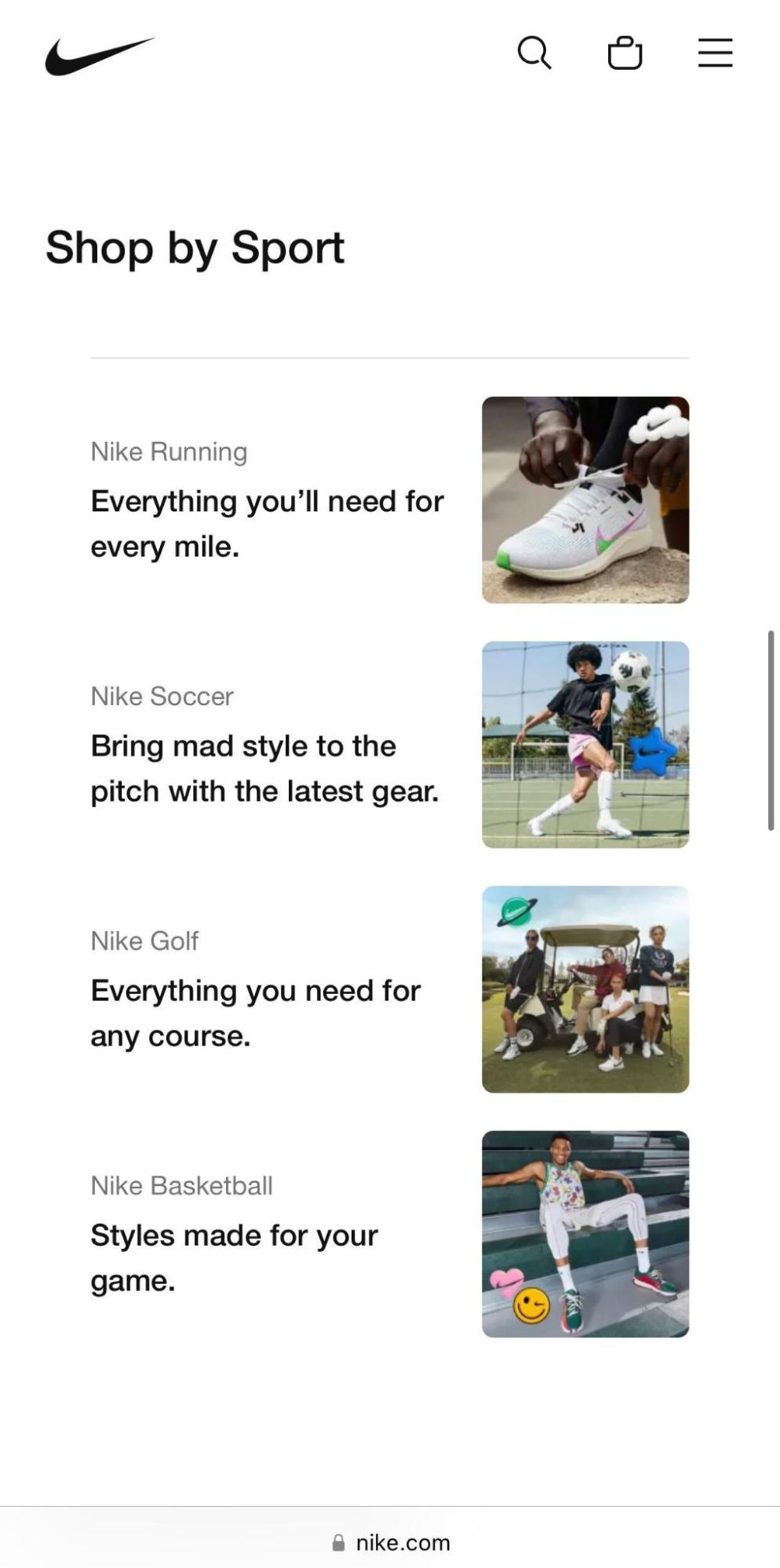
Nike maintains the same feel across its Nike Run Club app and ecommerce site.
Make sure all your customer touchpoints are in line with your brand guidelines. Everything should reflect your brand, from your website design to your retail store experience.
3. Integrate your systems
System integration links various IT systems, services, and software together.
Shopify provides a centralized platform where you can manage all your omnichannel activities. It integrates with your existing IT systems, including:
-
ERP (enterprise resource planning)
-
CRM (customer relationship management)
-
PIM (product information management)
-
POS (point of sale)
You can create a seamless flow of data between your activities and operate more efficiently.
Allbirds, a global fashion startup, faced challenges managing its retail spaces and improving omnichannel capabilities. It required a point-of-sale (POS) system that could handle peak retail foot traffic and leverage customer data for inventory decisions and in-store conversions.
By integrating Shopify POS across its 20 stores, it managed to increase conversions using buy in-store, ship to customer technology, which streamlined the checkout process and boosted customer satisfaction.
Further, intelligent inventory management allowed Allbirds to maintain less in-store stock and gather valuable insights about customer preferences, reinforcing its omnichannel retail strategy and improving customer experiences without the need for complex back-end systems.
👉Read how Allbirds increased conversions by improving omnichannel operations.
4. Personalize the customer experience
Once your systems are connected, collect and use customer data to create unique interactions for each customer. You can use data like history, browsing behavior, or personal preferences to tailor the online shopping experience.
Pura Vida excels in personalization. It uses data to offer personalized product recommendations and adjust the experience based on the individual. An engaging and satisfying experience like this results in higher sales.
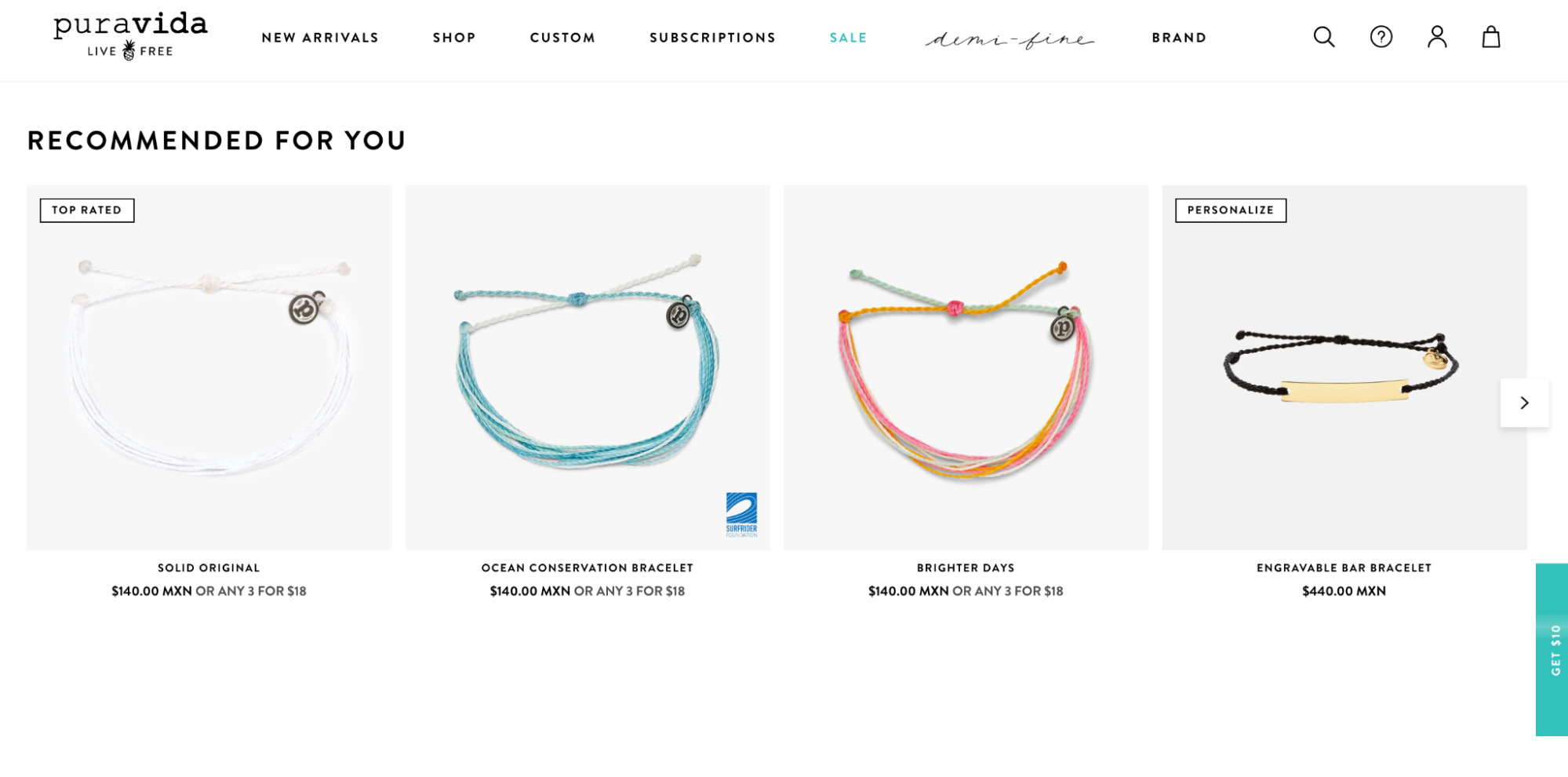
Pura Vida recommends products based on a browser’s behavior.
5. Optimize inventory management
To run an omnichannel operation, you’ll need accurate and real-time inventory visibility across all your sales channels. Your supply chain should be ready to handle orders from various physical and digital channels at once.
Walmart has an integrated inventory management system that keeps track of inventory in real time across all its stores. As a result, it can implement strategies like BOPIS (buy online, pickup in-store) effectively.
Make sure your inventory management system gives you real-time visibility across all your channels. Identify trends and forecast demand by analyzing your sales data. Keep in mind seasonal variations, promotions, and other factors that might influence demand.
Learn more from five of the best omnichannel brands.
Examples of omnichannel retail
Filling Pieces
Filling Pieces, a leading contemporary fashion brand founded in 2009 by Guillaume Philibert Chin, a 19-year-old design and entrepreneurship enthusiast, encountered significant growth challenges. Known for its events, collaborations, workshops, and pop-ups, the brand experienced website crashes due to high traffic volumes, especially during a 48-hour sale that attracted up to 10,000 visitors simultaneously.
To overcome these challenges, Filling Pieces transitioned to Shopify and adopted Shopify POS for its in-store and pop-up events, aiming for a seamless omnichannel experience for global customers. This move resulted in substantial improvements:
-
Increased efficiency in staff training: Onboarding and training on the POS system became 9 times faster.
-
Enhanced reliability: There have been no instances of downtime or site crashes since switching to Shopify.
-
Growth in sales: A 25% increase in average order value (AOV) was noted after implementing the POS system.
Animals Matter
Animals Matter is a luxury pet product business co-founded by Scott and Nancy Avera. Originally, their business model was focused on selling high-end dog beds, blankets, car seats, and accessibility items to retailers through catalogs. However, as consumer preferences shifted towards online shopping and catalog sales declined, they observed a need to change their approach.
Recognizing the growing influence of online retail platforms like Amazon, Animals Matter decided to transition to an omnichannel sales approach. Initially, their website was set up for ecommerce with ProductCart, but didn't sell products directly. They lacked an online presence, with no ecommerce, social media, SEO, or Google Ads strategies.
Scott chose Shopify for its user-friendly interface and comprehensive app store. After moving to Shopify, Animals Matter received expert guidance and support. This shift enabled them to establish a presence on social media platforms (Instagram, Facebook, Pinterest, YouTube), utilize Google Ads and Shopping, and engage in email marketing.
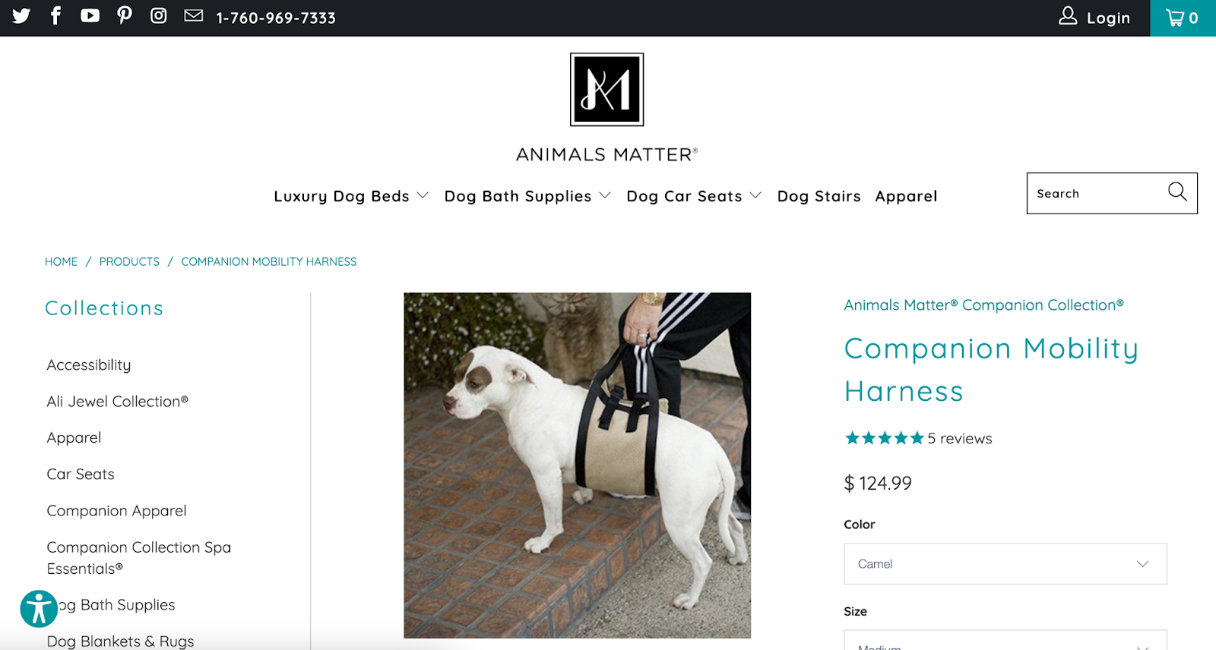
This strategic pivot yielded impressive results for Animals Matter:
-
A 45% year-over-year increase in sales.
-
A 46% growth in returning customer numbers.
-
A 36% increase in conversions.
-
A 75% return on ad spend for branded Google Ads.
Aje
Aje, a premium Australian fashion house known for its blend of raw beauty, tough femininity, and effortless style, has made a significant leap in enhancing its online retail presence. Recognized for its physical stores across Australia and New Zealand, Aje faced the challenge of mirroring its in-store experience on its digital platform.
With customers who are tech-savvy and research online before coming to the store, Aje saw an opportunity in virtual retail. However, its mobile site needed optimization, since a majority of customers — over 75% — engaged with the brand on their smartphones. Also, as Aje expanded into international markets, like renowned American department stores, it needed a better global website with localized pricing and content.
Shopify and Moustache Republic worked with Aje to fix these problems. This collaboration resulted in significant improvements to Aje's website, focusing on a seamless and intuitive user experience that bridged the gap between online and offline shopping.
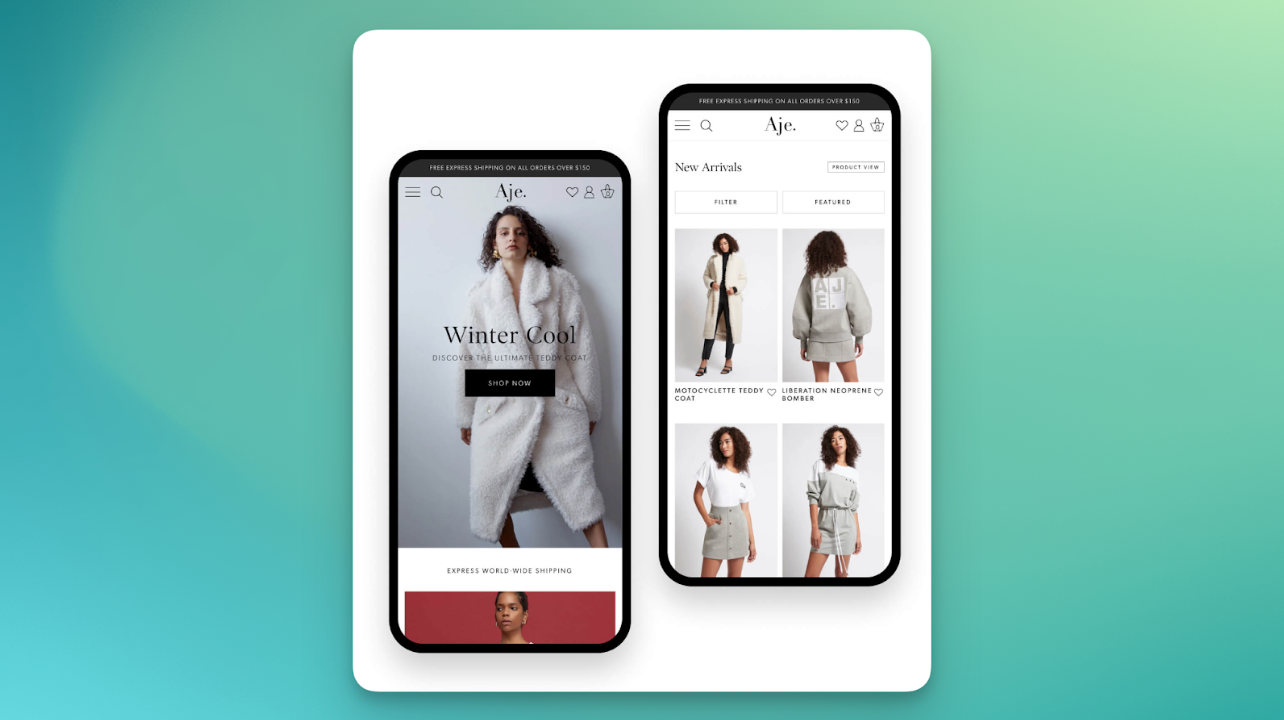
They found:
-
A 135% increase in conversion rate in just a few weeks.
-
A decrease in bounce rate.
-
Increases in pages per session and average session duration.
With these changes, Aje expanded to the global market, launching localized sites for New Zealand as well as a global site that supports 20 currencies. They now ship to 75 countries, including the U.S., Asia, and the Middle East.
Customers have liked the revamped website because it's easier to use and authentically reflects the Aje brand. In the future, Aje plans to try click-and-collect orders and a virtual stylist, building on its success online.
Omnichannel retail trends
Social ecommerce will become more interactive
According to Shopify’s Commerce Trends 2023 report, nine in 10 people buy from brands they follow on social media. Social commerce reduces friction between discovery and conversion, and leads to more sales. As reported in our survey, social marketing and promotion is the most important customer acquisition and retention strategy for driving business growth in the next few years.
Digital supply chains
Some 68% of retailers say the current supply chain crisis is negatively impacting their ability to fulfill customer demand. Brands need logistics practices that can adapt quickly so you can meet orders across all your channels.
Some ways to improve your supply chain include:
-
Shopify APIs and automations for inventory management: Shopify's inventory states API allows for real-time tracking of stock levels, integrating seamlessly with inventory management systems. Shopify Flow helps streamline the fulfillment process by automating tasks like preparing shipping labels, tagging orders by shipping method, and sending follow-up messages for delayed shipments.
-
Shopify Shipping as a revenue source: Shopify Shipping enables cost savings and potential earnings through a no-fee platform, offering competitive rates on shipping labels from top-tier carriers, pre-negotiated rates accessible via the Shopify admin, and embedded insurance on eligible labels.
-
Outsourcing with Shopify Fulfillment Network (SFN): SFN provides a software-based solution for businesses to digitize and outsource logistics. It optimizes product placement in the fulfillment network to ensure fast and reliable delivery, and includes Shop Promise, a feature for communicating expected delivery times to customers.
More immersive retail experiences
Shoppers preference for blended shopping channels is redefining the traditional retail store. Instead of being the final destination, storefronts are now one of several stops on the customer’s journey. A physical store can drive your online presence. For example, brands on average get 37% more website traffic the quarter after opening a new physical store.
“Online and offline are effectively one continuous experience,” says Shopify director of product retail and messaging, Arpan Podduturi. “Very few people walk into a retail store without having done their homework. They usually started on their phone. They’re following some brand and they go into stores with purpose.”
Lively, a direct-to-consumer bra company established in 2016, initially found success with an online store and community engagement through pop-ups with Nordstrom and Target. The company then opened physical stores to reduce customer acquisition costs, finding that customers who booked online fitting sessions spent significantly more than walk-ins. Lively's unique fitting experience, supported by Shopify POS to integrate online and in-store systems, leads to higher conversion rates and customer loyalty.
💡Read Shopfy’s Commerce Trends 2023 report
Omnichannel retailing can help you unlock growth
A seamless shopping experience across different channels is critical to succeed in the retail industry. Retailers have to adapt their business models to meet customers where they are and improve profitability.
Single-channel retail, marketing, and merchandising may one day be obsolete. That’s where omnichannel commerce comes in.
With a platform like Shopify, you build customer engagement across all your channels, whether in-person or online. Plus, unlock new channels for growth and future-proof your business with omnichannel functionality.
Read more
- Brand Loyalty in Ecommerce: Why and How Communities Are Key to Long-Term, Multi-Million Dollar Success
- Back-to-School Marketing: Ideas, Stats & How to Automate the “Other” Black Friday
- The 1 Rule for Building a Billion-Dollar Business
- How I Raised $1.1 Million Without a Network or Experience
- How You Can Profit from Personalizing Content on Your Ecommerce Store
- Consumer Psychology: Sell to the Person Behind the Persona
- Stop Trying to Increase Your Conversion Rates
- Reimagining Racial Equity in the Fashion Industry
- Back-to-School Ecommerce: Infographic & Lessons from $58.1B in Online Sales
- The Dirty Little Secret Traditional Enterprise Software Companies Don't Want You Knowing
Omnichannel Retail FAQ
What does omnichannel mean in retail?
Omnichannel retail is defined as selling and transacting across many channels. Those channels can be through ecommerce, marketplaces, in-store experience, and social commerce.
What is an example of an omnichannel retail strategy?
A retailer using an omnichannel retail strategy integrates its brick-and-mortar stores, online website, and mobile app in a seamless way, making it easy for customers to shop, check inventory, and return stuff all in one place. When you buy something online, you can pick it up in a store, or you can return it to your local store.
What are the three elements of omnichannel retailing?
-
Consistency: Create a consistent customer experience across all platforms and channels, including physical stores, online websites, mobile apps, and social media.
-
Channel integration: Make it easy for customers to move between various sales and communication channels. That includes inventory visibility, shared carts across platforms, and consistent branding.
-
Personalization: Analyze customer preferences, purchase history, and behavior across all channels to tailor the shopping experience and make accurate business decisions.
Is Walmart an omnichannel retailer?
Walmart is an omnichannel retailer. With its extensive network of physical stores and its online presence, Walmart offers online ordering, in-store pickup and delivery, a mobile app, and the ability to integrate customer data across these platforms for tailored shopping.




